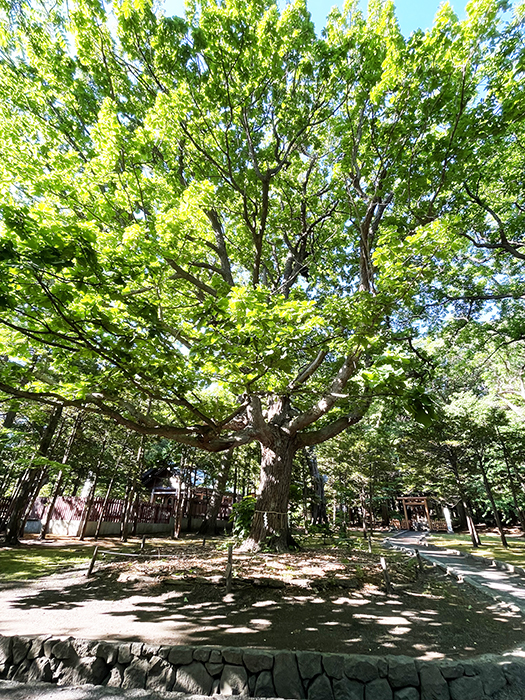
きのう空き家問題について講演受講を踏まえて書きましたが、この「空き家問題」というのはニッポン人のいまと未来を象徴する問題であり「家」制度の根幹にも関わっていると思っています。
わたしは長年、住宅雑誌に関わって生きてきましたが、それ自体は建築としての住宅というテーマが主体だったと思います。一方で、日本民族にとっての「家」とは、柳田國男が解明した「民俗」要素のなかでも根幹をなす、家系の伝承という「心意」領域の問題。
家というのは日本人にとってその基底的な精神性である「家の継承・家系の長期存続」を具体的に実現する生存文化的領域。だから「生き方」と深く関連性を持っていて、そこから「格式空間」のようなものも生まれてきた。
そのような家の「価値感」が底流にあって、ひとは家を建てたいという欲求を満たしてきた。
現代では住宅建築の「住みごこち」という感受性領域も技術解明されてきて、ややもするとそれ自身が「目的」でもあるかのように受け取る考え方まで出てくる。まぁ一種の「原理主義」の出現ではあるのでしょうが、多数派の冷静な心意としては、まったく違う位相で捉えているでしょう。
そういった考えで「空き家」問題を見てみると、それは家系の伝承という文化的位相と、核家族化という社会変化がもたらした位相での「家族制度の構造変化」が底流にあると思われる。
端的に言えば「親の家」とは別に自分が建てた家があって、家系伝承的考え方では整合しないような状況が生まれてきているということ。一方で「相続財産」という社会システムは厳然としてあって、問題が起こってきていると言えるのでしょう。
生きている間、家系伝承とは違う価値観で過ごしてきて、資産としてあるいは家系の「負債」として住宅建築が浮かび上がってきて、あらたな整合性を問うているともいえる。
考えて見ると明治という新時代以降、日本の人口規模は3−4倍に達した。戦後のスタート時点からも人口規模はほぼ2倍増している。この間に生起した最大の現象は「都市への人口集中」の結果としての住宅数の加速度的な増加というものがあるのだろう。
そして人口規模が、今後どうなっていくのか、血統としての日本民族は減少して行く趨勢は変わらないだろう。一方で地球的な規模での移民などの人口流動も考えられ、将来性は見通しにくい。住宅についても、どういった「流れ」かを判断して、その方向で戦略的に動くという選択も考えられる。
非常に興味深い領域に、日本の家は差し掛かってきているのかも知れない。
<写真は樹齢200年くらいと思われる北海道神宮参道にあるカシワの木>
English version⬇
The Vacant House Issue and the Nipponistic “Family Lineage Tradition” Psychology
The shift to the nuclear family and the difference in button position of the traditional “family lineage survival” mentality. The survival of the physical house, the liquidation of assets and liabilities, and other interesting aspects of the Japanese house. …
Yesterday I wrote about the vacant house problem based on a lecture I attended. I believe that this “vacant house problem” is a problem that symbolizes the present and future of the Japanese people and is related to the foundation of the “house” system.
I have been involved with housing magazines for many years, but I think the main theme of my work has been housing as architecture. On the other hand, the “house” for the Japanese people is a matter of the “spirit” of passing on the family lineage, which is a fundamental element of “folklore” as elucidated by Kunio Yanagida.
A house is a cultural realm of existence that concretely realizes “family succession and long-term survival of the family lineage,” which is the fundamental spirituality of the Japanese people. Therefore, it is deeply related to “a way of life,” and a “prestigious space” has been created from it.
Such a “sense of value” of a house has been at the bottom of people’s desire to build a house.
Today, the “livability” of residential construction has been technologically elucidated, and some people even take it as if it were its own “purpose. Well, it may be the emergence of a kind of “fundamentalism,” but the calm mindset of the majority probably sees it in a completely different light.
Looking at the “vacant house” issue from such a perspective, it seems that at the bottom lies a “structural change in the family system” in the cultural phase of family lineage transmission and in the phase brought about by social changes such as the shift to the nuclear family.
To put it simply, there is a situation in which a person has a house that he or she built separately from the “parent’s house,” which is not consistent with the idea of family lineage inheritance. On the other hand, the social system of “inherited property” is still strictly in place, and it can be said that problems are arising.
It can be said that people have spent their lives with a different sense of value from that of family lore, and housing construction has emerged as an asset or a “liability” of the family line, and a new question of consistency is being asked.
The population of Japan has tripled and quadrupled since the Meiji Era. Since the start of the postwar period, the population has almost doubled in size. The greatest phenomenon that has occurred during this period is probably the accelerated increase in the number of housing units as a result of the “concentration of population in cities.
The trend of the Japanese people as a bloodline will continue to decline. On the other hand, it is difficult to foresee the future because of the possibility of global immigration and other population movements. In terms of housing, there is the possibility of determining what the “trend” will be and choosing to move strategically in that direction.
Japanese houses may be approaching a very interesting area.
<The photo shows an oak tree on the approach to the Hokkaido Shrine that is believed to be about 200 years old.
Posted on 6月 24th, 2024 by 三木 奎吾
Filed under: 日本社会・文化研究







コメントを投稿
「※誹謗中傷や、悪意のある書き込み、営利目的などのコメントを防ぐために、投稿された全てのコメントは一時的に保留されますのでご了承ください。」
You must be logged in to post a comment.